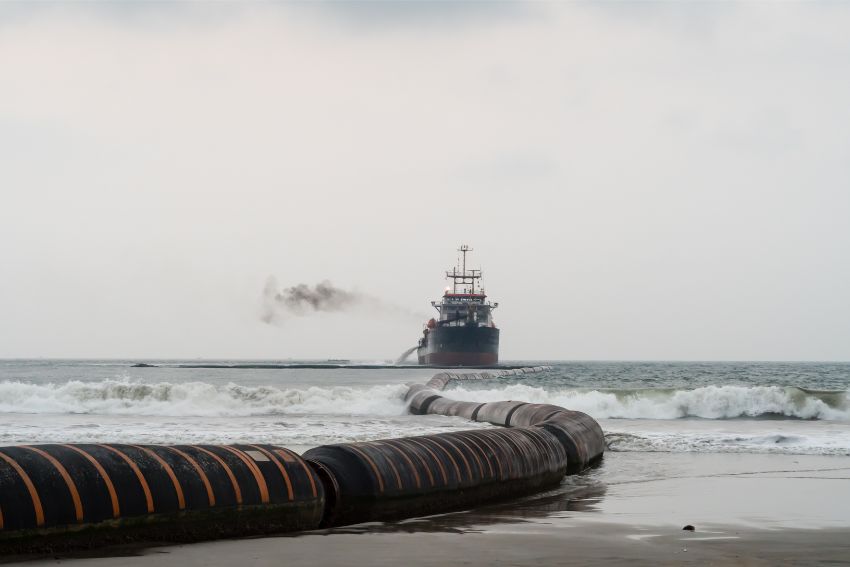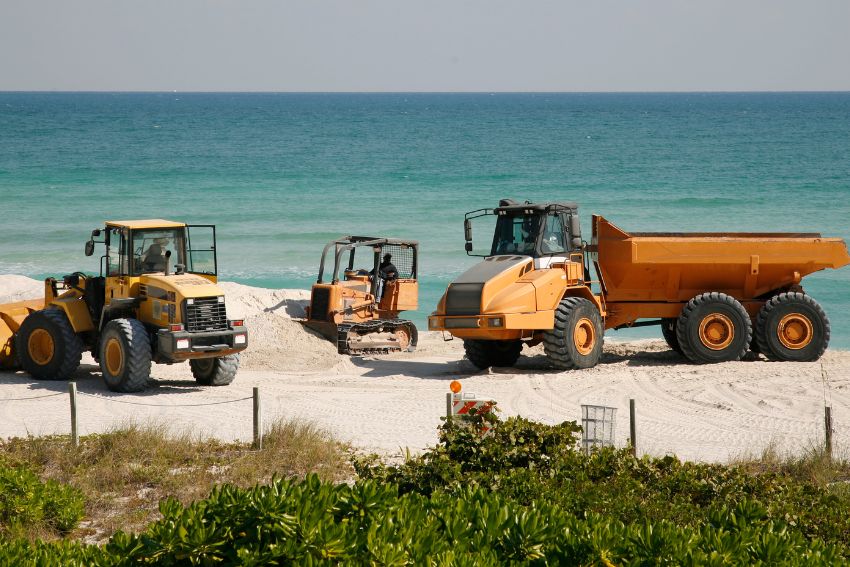If you’re studying GCSE Geography or A Level Geography, you’ve likely heard of soft engineering. It’s a key part of the coastal management topic, one that comes up often in both coursework and exams.
Soft engineering is important because it shows how humans can work with nature to protect coastlines, rather than building large, artificial structures. You’ll learn about it in detail during your geography lessons, especially when studying how we respond to erosion, flooding, and rising sea levels.
By understanding soft engineering, you’ll not only gain knowledge for your exams but also learn how people across the world are protecting communities and the environment. Let’s break it down in a simple, clear way that helps you remember it all with ease.

What Is Soft Engineering?
Soft engineering is a way of managing the coast by using natural processes and materials. Instead of building large concrete walls, it works with nature to reduce the effects of erosion and flooding.
Unlike hard engineering, which involves man-made structures like sea walls or rock armour, soft engineering focuses on natural solutions. These methods are usually more sustainable, cheaper over time, and better for the environment.
The main aim of soft engineering is to protect the coastline while keeping it looking natural. It tries to slow down erosion and reduce the damage from storms without harming the ecosystem.
How Soft Engineering Works
To begin with, soft engineering uses natural methods to protect coastlines without harming the environment. Now, let’s explore some of the most common techniques you’ll study in geography.
Beach Nourishment
This method adds extra sand or shingle to a beach to make it wider and higher. The material often comes from the sea floor or nearby areas. A bigger beach absorbs more wave energy, which helps to slow down erosion. However, the added material can be washed away, so it needs to be replaced regularly. This process is sometimes called recharging the beach.

Dune Regeneration
Sand dunes act like natural barriers against waves. Dune regeneration involves planting grasses or shrubs to help trap sand and keep the dunes in place. Fencing and pathways are also added to protect the dunes from being damaged by people walking over them. This method is low-cost and very effective if the dunes are well looked after.

Managed Retreat
Sometimes, when protecting every part of the coastline isn’t practical, it’s better to allow certain low-value areas near the coast to flood naturally. This method is called managed retreat. As time passes, salt marshes gradually form in these flooded zones, creating new habitats for birds and other wildlife. In the long run, this becomes a sustainable solution, especially in areas where building hard defences would be too expensive or cause environmental damage.
All of these techniques aim to blend with the natural landscape. Instead of blocking the sea, they help the coastline absorb its energy in a more balanced way.
Soft vs Hard Engineering: Key Differences
To fully understand soft engineering, it helps to compare it with hard engineering. Both aim to protect the coastline, but they do it in very different ways.
Here’s a quick comparison to help you remember the main differences:
| Feature | Soft Engineering | Hard Engineering |
| Cost | Usually cheaper in the long term | Often very expensive to build and maintain |
| Appearance | Blends with the natural landscape | Looks artificial and can block views |
| Environmental Impact | Works with nature and supports wildlife | Can damage habitats and disrupt ecosystems |
| Long-Term Results | Slower but more sustainable | Immediate results, but can cause new problems elsewhere |
As you can see, soft engineering is more focused on sustainability, while hard engineering is about fast, strong protection. Both have their place, but soft methods are often better for the environment and local communities.
Advantages of Soft Engineering
Soft engineering comes with many benefits, especially when you’re thinking about the environment and long-term results.
- Environmentally friendly
These methods work with nature, not against it. They support wildlife and help maintain natural habitats. - Less expensive over time
Although some soft techniques need regular maintenance, they’re usually cheaper than building big concrete defences. - Looks more natural
Soft engineering keeps coastlines looking like coastlines. It doesn’t spoil the view or change the landscape too much.
For many communities, soft engineering offers a gentler, more balanced way to protect the coast while keeping nature intact.
Drawbacks of Soft Engineering You Should Know
While soft engineering has many positives, it’s not perfect. There are some downsides you should understand before exams.
- Slower results
Soft methods take time to show impact. They don’t offer instant protection like hard structures do. - Might require frequent upkeep
Techniques like beach nourishment need regular maintenance to stay effective. This can be time-consuming and costly in the long run. - Not suitable for all coastlines
In areas with strong waves or rapid erosion, soft engineering may not offer enough protection on its own.
Even with these challenges, soft engineering is still a popular option, especially where long-term sustainability is the main goal.

Real-Life Examples of Soft Engineering in the UK
Let’s look at how soft engineering works in real places. Two great examples are Pevensey Bay and the Holderness Coast.
Pevensey Bay, East Sussex
This coastal area uses beach nourishment as its main defence. Each year, new shingle is added to the beach to replace what’s been washed away. In addition, special machines move the shingle around to make sure it stays evenly spread. As a result, this helps absorb wave energy and protects the land behind the beach. Overall, it’s a good example of how regular maintenance can keep soft engineering working effectively.
Holderness Coast, East Yorkshire
Parts of the Holderness Coast use managed retreat. In some low-value areas, sea defences have been removed, and the land is allowed to flood naturally. Over time, salt marshes form, creating habitats for birds and other wildlife. This also helps reduce pressure on other parts of the coastline.
Both examples show how soft engineering can protect the coast while supporting the environment. They also remind us that no single method works everywhere, each location needs its own solution.
Revision Tips for Soft Engineering Exams
Soft engineering is a common topic in GCSE and A-Level Geography exams, so it’s important to revise it well. Here are some tips to help you remember key points:
Memory Aids
- B.D.M. : Beach Nourishment, Dune Regeneration, Managed Retreat
(Helps you remember the three main techniques.) - Soft = Sustainable: A simple way to remember that soft engineering works with nature, not against it.
Use Diagrams
Draw a quick sketch of each method:
- A cross-section of a beach showing beach nourishment.
- A dune with plants and fencing for dune regeneration.
- A flooded area showing managed retreat and salt marshes forming.
You don’t need artistic skills, just make sure your labels are clear.
Sample Question
“Explain one advantage and one disadvantage of using soft engineering to manage coastal erosion. (4 marks)”
How to approach it:
- Pick one technique (e.g., beach nourishment).
- Write one clear sentence about an advantage.
- Write one clear sentence about a disadvantage.
- Add a small example or detail to show deeper understanding.
Taking time to practise short answers like this will help you feel more confident on exam day.
Conclusion
Soft engineering is more than just a topic in your geography exam. It’s a real-world solution to one of the biggest challenges we face today, climate change.
As sea levels rise and storms become stronger, protecting coastlines has never been more important. Soft engineering offers a way to do this without harming the planet. It helps us manage erosion, protect homes, and support wildlife, all while working with nature.
So, when you study beach nourishment or managed retreat, remember it’s not just for marks. It’s about understanding how we can live more sustainably and protect our future. By learning these methods now, you’re gaining knowledge that could help shape tomorrow’s world. If you ever feel stuck or want extra support, online geography tutors can help you understand these topics more clearly and prepare confidently for your exams.
FAQs
What is soft engineering GCSE?
In simple terms, soft engineering uses natural methods to manage the coast. For example, techniques like beach nourishment and dune regeneration help reduce erosion.
What is the meaning of softness engineering?
Put simply, it means working with nature to protect land from flooding and erosion. Instead of building walls, it uses sustainable solutions.
What is the work of soft engineering?
Its main role is to reduce coastal damage. By absorbing wave energy through natural defences, it helps protect the land effectively over time.
How effective is soft engineering?
Overall, it’s quite effective in the long term. However, it works best in low-risk areas and may require ongoing maintenance to stay reliable.








